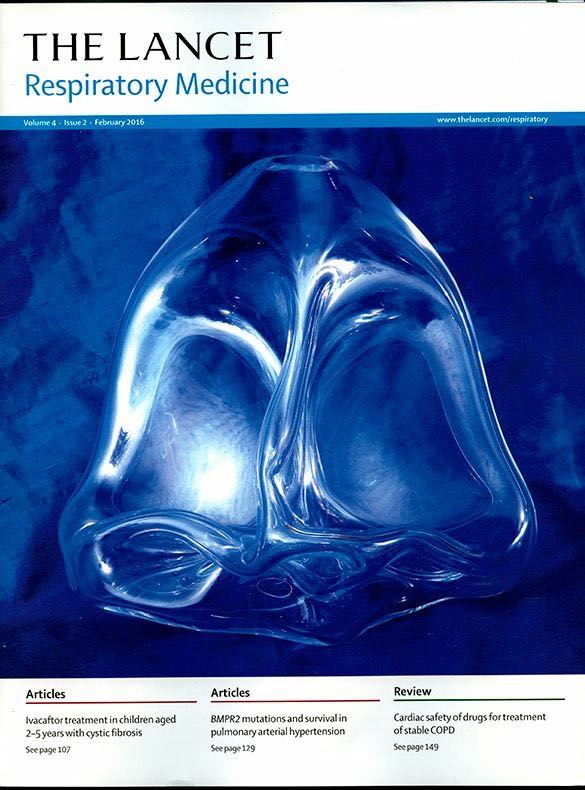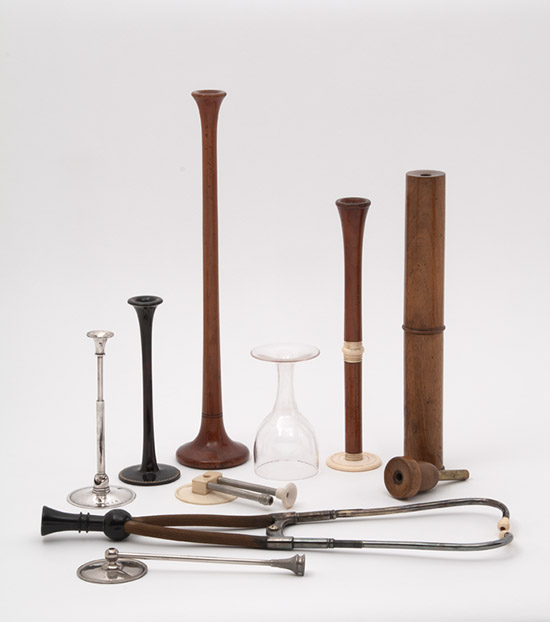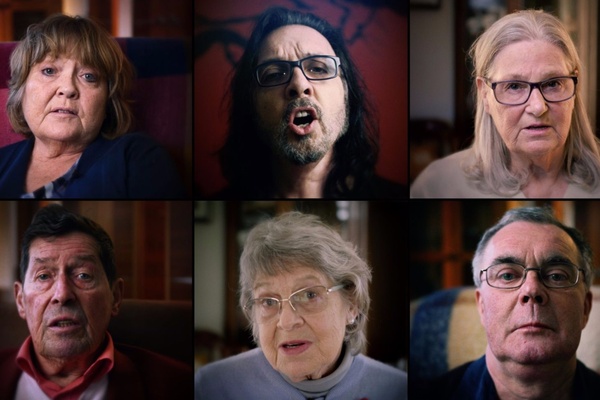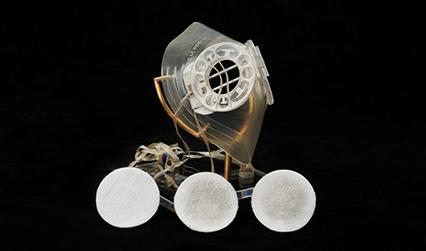RCP’s Catch Your Breath
by Sarah McLusky, Project Manager
Pause for a moment and take a deep breath. How does it feel? What does it make you think? How many breaths have you taken today without even noticing?
Breathing isn’t just a bodily function. From a baby’s first cries to a dying gasp, breath is an ever-present companion on our journey through life. It allows us to speak, laugh and sing. It connects us to the outside world for good or ill. It reflects our state of mind and can be consciously controlled. Breath has inspired art and literature. For many it has deep spiritual significance. The personal and cultural meaning of breathing goes way beyond the simple act of keeping us alive.

These themes are explored through Catch Your Breath, a temporary exhibition which visits the Regent’s Park Building at the Royal College of Physicians from 2 April to 21 September 2019. Drawing on art, philosophy, anthropology, literature and medical history, it showcases objects from the RCP collections and beyond and tells the story of how our relationship with and understanding of the breath has developed over time.
Everything begins with the breath
Originally developed with Palace Green Library in Durham, the exhibition is based on the research of Life of Breath, a Wellcome Trust funded medical humanities project led jointly by Durham University and the University of Bristol. The interdisciplinary team are working together to find new ways of understanding breathing and breathlessness, and their relationship to both illness and wellbeing.
Breath is an unusual theme for an exhibition, and a surprisingly unusual research topic. Respiratory illness, the third biggest cause of death in the UK, is undoubtedly a subject which warrants study, but why investigate the breath and not, for example, the lungs? Although physicians might understand lung disease through the anatomy and physiology of the body, those living with conditions that cause breathlessness understand their illness through their everyday experience of breath (or lack of it) rather than abstract biological concepts. And the way we all understand breath is a social construct, based not just on the way we feel the movement of air into and out of our bodies, but also on the significance we ascribe to it. In turn, this can be influenced by a plethora of things from religious beliefs to past experiences. Catch Your Breath, and indeed the Life of Breath project, seeks to explore the myriad ways that people think about, describe, portray, treat, mistreat, use and ultimately experience the breath.
Making the invisible visible
The greatest challenge facing both the exhibition curators and the researchers is how to ‘catch’ – to measure, study, visualise or describe – something so fleeting and ethereal? The exhibition title ‘Catch Your Breath’, a phrase with many meanings, reflects this intangibility.
‘Catch your breath’ is one example of the rich language and metaphor around the breath. Think about all the other sayings – with bated breath, don’t hold your breath, under your breath – that describe aspects of the experience. Along with more descriptive terms like wheeze, pant and sigh, the lack of a clear physical form means the breath has provided rich pickings for artists, writers and philosophers.

Courtesy of Jayne Wilton
Beginning with the notion of ‘catching’ the breath, the exhibition includes several works by contemporary British artist Jayne Wilton. Jayne is fascinated by breath and has developed many techniques for visualising it. The blown glass sculpture Breath which turns back towards itself (2015) was inspired by the work of the ancient Greek philosopher Philo (c20 BCE – c55 CE), who believed that breath or ‘pneuma’ was a constantly moving animating force which gave integrity to all things. Much of Jayne’s work has focussed on capturing exhaled breath, but in this series she was determined to explore inhaled breath. Jayne created the piece at Sunderland Glass Centre, first exhaling and then, perhaps ill-advisedly, inhaling so the molten glass would collapse in on itself.
The Greeks were by no means the only culture to have ideas about the significance of the breath. In medieval times, they believed the body was animated by ‘vital spirits’, a mixture of blood and pneuma, replenished and cooled by the act of breathing. It was thought to be intimately connected with the emotions and extreme emotions would cause the vital spirits to be suddenly withdrawn to the heart. The exhibition includes copies of The Book of Margery Kempe (1430) and Chaucer’s Troilus and Criseyde (1380), which both describe breathlessness and extreme emotions in terms of vital spirits being withdrawn or out of balance.

Royal College of Physicians, London
Medical understanding progressed as physicians began to focus more on experiment and observation, developing new devices which could help them diagnose patients who had trouble breathing. The two most useful have employed listening to the lungs and measuring the volume and power of the breath. The stethoscope, invented in 1816 by the French physician René Laennec, began as a simple hollow tube, but opened up a world of aural information on the inner workings of the body. Doctors can now distinguish between a variety of different breath sounds and diagnose accordingly. By contrast, the stethometer, spirometer and peak flow meter – all of which feature in the exhibition – attempt to quantify the exhale, helping with diagnosis of conditions like chronic obstructive pulmonary disease (COPD) and asthma which make it harder to move air in and out of the lungs.

Courtesy of John Donoghue
Despite all these improved techniques for gathering information, breathlessness still often defies description. In a frustrating phenomenon known as ‘symptom discordance’, the patient’s subjective experience of breathlessness may be at odds with the evidence – someone with poor lung function may feel fine, whilst another with apparently good lung function may be very distressed. Exploring this phenomenon is at the heart of the Life of Breath project research.
Breathlessness: from stigma to solutions?

Courtesy of Matt James Smith
The inability to ‘catch your breath’ is commonly used as a metaphor for breathlessness. Whether due to illness or pollution, not being sure that the next breath will be easy or safe can be a terrifying experience. One of our main aims for this exhibition was to share the stories of people who live with breathlessness in an attempt to challenge the stigma that surrounds it. Commissioned especially for the exhibition, Still/Breathing (2018) by film-maker Matt James Smith features intimate interviews with five people who have one thing in common – they all live with conditions that cause breathlessness. The underlying causes are varied – from asthma to anxiety to tuberculosis (TB) – but they share remarkably similar insights into what it feels like to be breathless, how it impacts on their life and why lung disease can be so invisible and misunderstood.

Much of the stigma associated with lung disease is due to the assumed connection with smoking. However, it is becoming increasingly clear that air pollution is overtaking smoking as a major cause of lung disease. Air pollution in London is nothing new – in Bleak House by Charles Dickens (1874) the fog that hangs over the city is a central character, representing disease and corruption. The exhibition also features a Ministry of Health report, which shows the scale of the health problems caused by the Great Smog of 1952. This thankfully led directly to the Clean Air Act (1956).

One of the challenges with air pollution today is that it is often invisible. Air Transformed (2015), a series of sunglasses and necklaces by artists Miriam Quick and Stefanie Posavec, makes air pollution visible, tangible and three dimensional. Representing air pollution data from Sheffield in 2014 the sunglasses reveal the presence of various chemicals in the air, while the shapes and colours of the necklaces indicate the amount of large atmospheric particulates. The shockingly bright and spiky orange segment represents the reading taken on Bonfire Night, revealing the danger of the smoke-filled air.

Courtesy of John Donoghue
Long before the underlying causes were understood, doctors were developing treatments to relieve breathlessness. The exhibition showcases a number of these from familiar inhalers, like Sir Hiram Maxim’s Pipe of Peace (1909), which delivered a mixture of ‘menthol and evergreen’ vapour, to curious herbal concoctions like a 17th century recipe for a medicinal syrup made from fox lungs! Perhaps most surprising is that until just 100 years ago, tobacco and other herbal cigarettes were actually recommended by physicians as a treatment for coughs, asthma and hayfever. The landmark RCP report Smoking and Health (1962) was key to changing both medical and public opinion, and there is now a United Nations aspiration that we will, one day, live in a tobacco-free world.
Breath, belief and being
Finally, ‘catch your breath’ can mean ‘take a break’ and we hope that people visiting the exhibition will do just that – take some time out from everyday life to reflect on their breath and what it means to them.
Mindful breathing may seem to be a modern phenomenon, but virtually every religion ascribes significance to the breath, with particular connections between breath and notions of spirit or life-force. One of the most striking exhibition graphics highlights many of these – from the Karo of North Sumatra who believe that ‘breath becomes wind’ when the soul leaves the body, to Sufis who practise deep conscious breathing to purify the self and be in the presence of God. In Jewish and Christian traditions, the breath of God is the source of all life: in the exhibition, there is a Renaissance bible open to the Book of Genesis where “…the Lord God formed man of dust from the ground, and breathed into his nostrils the breath of life”. Indeed, the terms pneuma (Greek), spiritus (Latin) and ruach (Hebrew) all translate to both ‘breath’, and ‘spirit’ or ‘god’.

Breathing exercises derived from the ancient Indian practice of pranayama (as, for example, outlined in The Hindu-yogi Science of Breath) may provide one of the most valuable self-care techniques for people who experience breathlessness. Learning to control their breathing can help patients self-manage their symptoms, reducing their need for emergency medical care. This doesn’t have to mean meditation; both singing and dancing can also be great for lung health and general wellbeing.

Courtesy of Ian Derry
Learning techniques of breath control also enables people to do extraordinary things. The striking image we’ve used on much of the publicity material is a still from the film Johanna Under The Ice (2016) by Ian Derry, which you can see in the exhibition. Both beautiful and terrifying, it features record-breaking freediver Johanna Nordblad, as serene as the viewer is anxious, swimming under thick ice with no oxygen tank and apparently no escape route. The film is my favourite item in the exhibition, and despite having watched it many times, it still invokes a deep sense of gratitude – for fresh air, for reasonably healthy lungs, for the freedom to breathe – and is a reminder not to take these things for granted. If visitors come away with a similar sense of appreciation for the humble breath then we will have achieved our aim.
Catch Your Breath is exhibited at the Royal College of Physicians in London until Saturday 21 September 2019. On the final day, RCP is hosting an Open House as part of the Open House London Festival.



